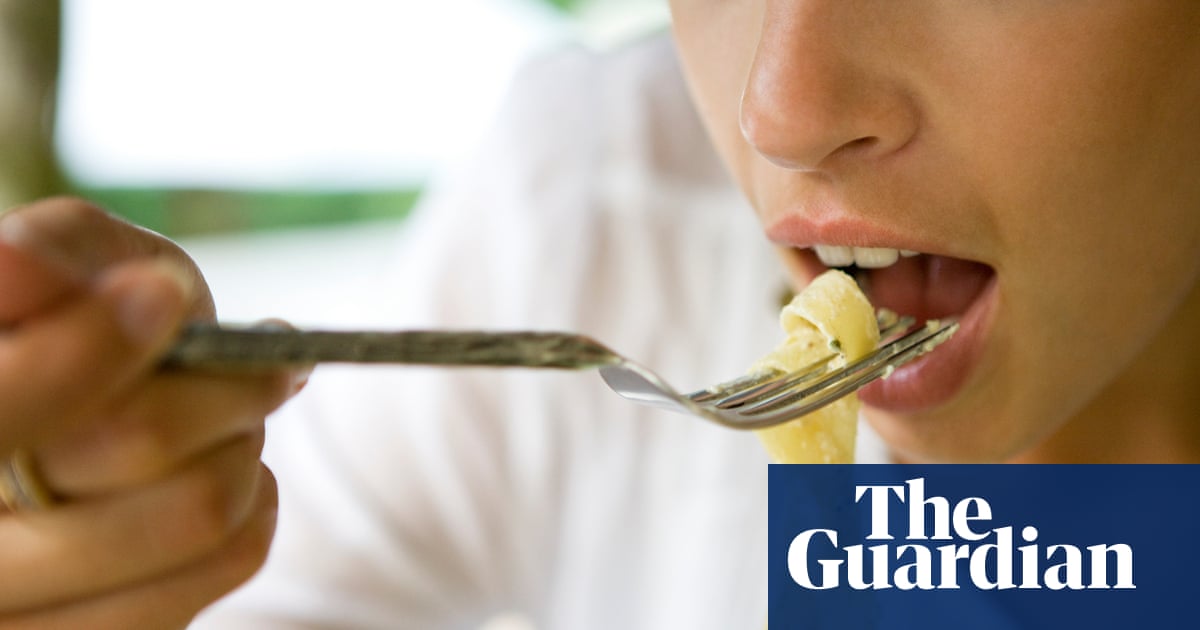
You should chew your food until it is small enough to swallow easily, so your stomach does not have to work too hard. Digestion starts in the mouth.
Saliva contains amylase, the enzyme that helps to chemically break down food. There is also mechanical digestion, the physical action of breaking down food. If food does not stay in the mouth long enough, it is not exposed to amylase to break down the carbohydrates – there is very little carbohydrate digestion in the stomach, and if food gets there without being properly digested, the stomach has to work harder. There are also some things the stomach cannot digest. If bits of food enter the top of your small intestine still quite whole, it can lead to bloating and discomfort.
Rather than advising an absolute number of times to chew your food, I recommend people put their food or cutlery down between mouthfuls – then, when you have finished chewing and swallowing, pick up your cutlery and take the next mouthful. There is something that invites urgency when you have a fork full of food in front of your face, waiting to go into your mouth, which makes you think you need to finish your food more quickly. Just putting your cutlery down between mouthfuls can give you a sense of when the food has been chewed enough.
Jo Travers, nutritionist at the London Nutritionist and the author of The Low-Fad Diet, was speaking to Tolani Idris
Source: TheGuardian
